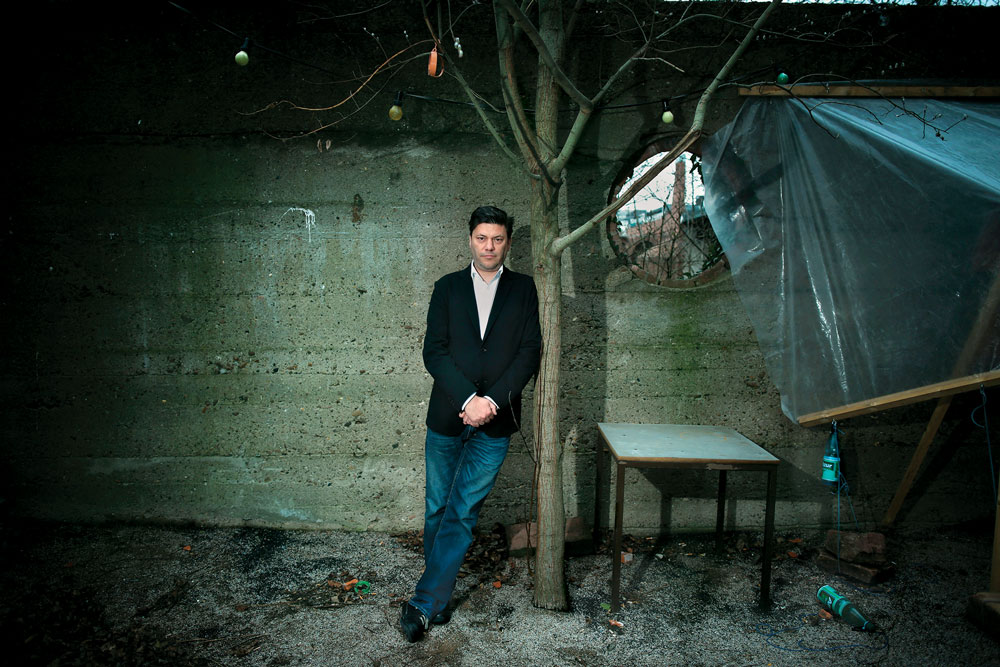In what is widely seen as a coup, the Biennale de Montréal hired Philippe Pirotte as the curator of its 2016 edition, which means that in addition to his responsibilities as director of the Städelschule in Frankfurt, this Belgian art historian and exhibition maker has been crossing the pond at regular intervals to immerse himself in the Canadian art scene.
“I encountered a very active but weird art world,” he says from his office. “I encountered Montreal, a fantastic city with incredible architecture and diversity, which never managed to become a hub on the international arts scene.”
The Biennale de Montréal, running from October 19, 2016, to January 15, 2017, is one of Montreal’s many subsidized cultural activities that attempt to reverse that verdict. Known as a city of festivals, Montreal has a cultural hyperactivity that has produced now-international phenomena like MUTEK and Nuit Blanche. But for Pirotte, this creative effervescence—or festival mania—does art a disservice.
“I don’t see art as benefitting from festivals,” he says. “With all respect to a recent example like the Moscow Biennale, which reduced its run to 10 days and became a type of festival, it affirmed a way of experiencing art as event-based, uniting works created by artmakers that also act as their own public. It’s very circular. Luckily the Biennale de Montréal has some duration. We’ve somehow forgotten that visual art can create time.”
In Pirotte’s eyes, there’s quite a bit about good curating that’s been forgotten. The 44-year-old art historian classifies himself as old-fashioned: he is more interested in finding the next Van Eyck than anything trendy. For him, a good curator isn’t a public intellectual, but an exhibition maker who brings works together in a way that enriches their potential and unleashes more complex paths of interpretation for viewers. His golden rule: never use art to illustrate an issue.
“Biennials tend to be very authorial, and they try to invent new formats,” says Pirotte. “At the last Venice Biennale, they even had the ambition to talk about ‘All the World’s Futures’—I think that’s preposterous. The last Biennale de Montréal was also called ‘L’avenir (looking forward).’ I really feel I cannot claim to say anything about the future, or the state of the world. As a curator I don’t think that’s my job.”
Pirotte’s title for the Montreal exhibition is “Le Grand Balcon,” in reference to a play by Jean Genet. It’s more of an inside joke than anything, and he in no way intends it to influence or explain the art exhibited.
“I like the conflicting meanings of ‘grand’ in French and English,” he says.
In the past, Pirotte has worked with artists Anne-Mie Van Kerckhoven, Owen Land, Oscar Tuazon, Jutta Koether, Allan Kaprow and Corey McCorkle, whom he’s brought on as co-curator—along with Aseman Sabet and Kitty Scott—for this year’s biennial. Pirotte has also done studio visits across the country and promises to bring in some Canadian diaspora, including artists Moyra Davey, Ben Schumacher and Shannon Bool.
“What I want to do is be experimental with my own habits. I’m using this project as a tool to reboot the whole idea of curating for myself. There are people involved who I’ve worked with before, but they’re mostly new. And that’s very exciting.”
This post is adapted from an article that appeared in the Summer 2016 issue of Canadian Art. To get every issue of our magazine delivered to your door before it hits newsstands, visit canadianart.ca/subscribe.

 Philippe Pirotte, curator of the 2016 Biennale de Montréal, is also director of the Städelschule in Frankfurt, where this photo was taken in March 2016. Photo: Christoph Boeckheler.
Philippe Pirotte, curator of the 2016 Biennale de Montréal, is also director of the Städelschule in Frankfurt, where this photo was taken in March 2016. Photo: Christoph Boeckheler.







